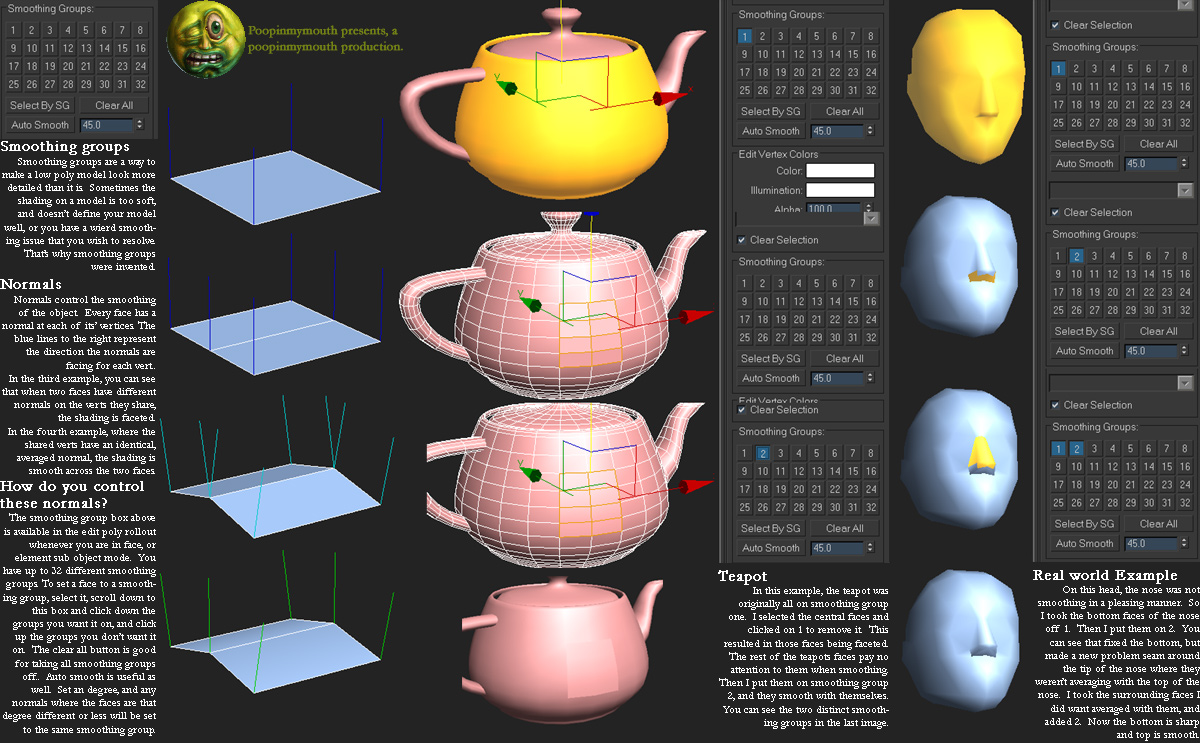Smoothing Groups
From polycount
Revision as of 12:12, 20 December 2014 by EricChadwick (Talk | contribs)
Smoothing Groups
3ds Max uses Smoothing Groups to create hard/soft edges between polygons, by splitting/combining vertex normals. When neighboring polygons do not share the same Smoothing Group, this creates a hard edge between them.
Maya uses Harden Edge and Soften Edge to do the same thing.
UV Shells
To reduce shading errors with tangent-space normal maps, it is best to use hard edges on your model everywhere there are UV edges. This creates less extreme gradients in the normal map, which reduces shading errors when you use a non-synched renderer, reduces errors introduced by LODs, and allows the tangent basis to twist around appropriately.
- You're making me hard. Making sense of hard edges, uvs, normal maps and vertex counts Polycount Forum thread
Smoothing Tools
- turboTools for 3ds Max includes a tool to convert UV shell borders into hard edges.
- TexTools for 3ds Max includes a tool to convert hard edges into UV shell borders. The author also wrote a script to convert UV shell borders into hard edges, see [[3dsmax UVW seams to Smoothing Groups?]] Polycount Forum thread.
- EdgeSmooth for 3ds Max is a tool to convert selected edges into hard edges, acting much like Maya's workflow. However the resulting mesh creates shading errors in some game engines.
- PolyUnwrapper ($) for 3ds Max includes a tool to convert UV shell borders into hard edges.
Tutorials

Smoothing Groups tutorial for 3ds max by Ben "poopinmymouth" Mathis.